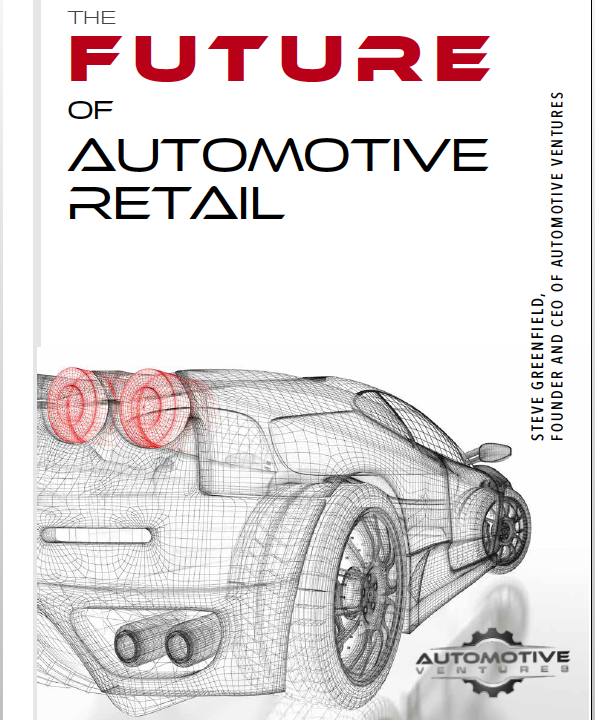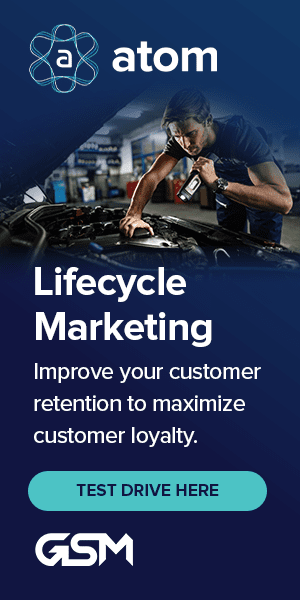Welcome to another edition of The Future of Automotive, with Steve Greenfield, Founder, and CEO of Automotive Ventures, where I put recent automotive and mobility news items into context, in terms of the broader thematic areas that will potentially impact the industry.
I’m glad that you could join us.
I don’t believe that anyone has ever accused Elon Musk of not thinking big.
This is the man who’s in the process of launching 700 micro-satellites into orbit to provide the earth’s inhabitants with low-cost and unfettered internet access for all.
He wants to bore tunnels under the earth to alleviate traffic congestion.
He wants to embed computers into our brains to augment human intelligence.
Musk aims to take us to Mars and plans to make the human race “interplanetary.”
And Tesla, and his solar initiatives, are part of a “Master Plan” that envisions the creation of sustainable energy on Earth.
I don’t think anyone could possibly accuse the man of not thinking big.
But as this year has played out, it’s also being revealed just how much of a keen business strategist he is.
Threatened by legacy automakers like Ford and GM bringing dozens of new EV models to market, Tesla has been exploiting its industry-leading profit margins with multiple aggressive price reductions this year, with the intent of disrupting retail pricing of EVs across the category and squeezing competitors’ profits.
When you have companies like Ford losing billions of dollars across their EV division, it’s got to be scary having to compete with a highly profitable company like Tesla that can drop prices dramatically, all but eliminating any hope of delivering profit from selling EVs into the future.
In China, where there is much greater supply (and demand) for EVs, Tesla has been disrupting the market by giving 50% discounts on its cars. This has led to a major price war in the Chinese market and caused other EV makers to change their pricing strategies.
And, over the past two weeks, we have seen another competitive lever that he can pull, to drive adoption of the Tesla Charging network, effectively turning their massive Supercharger network into a competitive advantage.
But let’s take a step back for a second.
When Tesla announced last year it would share its EV charging connector design to encourage automakers to adopt the technology and help make it the new standard in North America, few, if any, predicted competitors would bite. Now, it seems that the Tesla standard — dubbed the North American Charging Standard (or NACS) may be quickly moving towards becoming the industry standard.
According to J.D. Power, 21 percent of EV owners who attempted to charge at a public charging station in the first three months of 2023 were unable to do so. This number is up dramatically from 15 percent in 2021. The failure rate stems from a range of problems, such as broken displays, software bugs, severed power cords, or drivers hogging charging spots.
Juxtapose this against the Tesla Supercharger network: Just 4 percent of Tesla owners reported a charging failure in the first three months of 2023. And there’s a reason for this. It’s the only public charging network that’s built, owned, and operated by a major automaker.
At present, two main types of EV charging plugs exist, Tesla’s NACS standard and the Combined Charging System (or CCS), used by nearly every other automaker.
Tesla has built out their network of roughly 17,000 fast chargers called Superchargers, which are only accessible to vehicles with the NACS standard.
The quality of Tesla’s charging system — from the size and weight of the charging cables to the quality of the Supercharging stations, to the ease of payment — has been a key strategic puzzle piece that has helped propel Tesla to become the No. 1 seller of EVs.
Four months ago, the U.S. was heading down the path of the CCS standard being the only one eligible for federal funding. EV chargers built with funds from the $5 billion National Electric Vehicle Infrastructure formula program had to have a CCS connector.
As of June 9, the White House said that EV charging stations using Tesla’s standard plugs would now be eligible for billions of dollars in federal subsidies. But they must include the “combined charging system” adaptor to qualify.
By making its stations into public charging points, Tesla will qualify for approximately $5 billion in federal funding marked for public charging infrastructure, part of a broader White House attempt to build and deploy half a million EV chargers.
Recent news that both GM and Ford will conform to the Tesla charging system standard, means that the rest of the auto industry may be forced to follow suit. If so, it would provide a major victory to Tesla, who would be assured a new and guaranteed revenue stream for years to come.
Tesla’s new Supercharger strategy allows the company to make money off its competitors’ customers by collecting charging fees from them. (Pricing varies by region, time of day, and whether an EV was made by Tesla, but it generally costs between $10 and $30 to charge up a car.)
It’s not yet clear which other automakers might join Ford and GM, but apparently, Stellantis is evaluating a switchover as well.
One potential downside to Tesla’s newly invigorated charging strategy is that its own customers will have to share Supercharger custody with other EV drivers. Musk vowed that his chargers will not discriminate between Tesla vehicles and those of other manufacturers.
Tesla understood the importance of a charging network earlier and more fully than incumbent manufacturers. They got in early, and they were willing to spend billions of dollars to build the dominant network.
All of this news has got me thinking about standards, how they’re established and how standards wars have been won in the past. If look back at history and see what we can learn about the business strategy that Tesla is likely executing to win the EV charging standard wars.
From a strategy standpoint, Tesla is looking a bit like Apple when it set up its App Store, positioning itself as a middleman between app developers and their own customers.
A product displays positive network effects when more usage of the product by any user increases the product’s value for other users (and sometimes all users).
A great example is Apple, which has executed a powerful network effect and built its success and products on it. If there is a large market population of owners of Apple devices, there is more value for app developers to invest and concentrate on IOS apps. A greater number of developers mean statistically better-made apps and more variety, which increases the value of owning an IOS device to be able to use these apps. This creates a symbiotic relationship between the app developers and the Apple customers.
Across many industries, we’ve witnessed intense standard wars play out, including:
- Microsoft’s Excel vs. Lotus 123
- Microsoft Word over WordPerfect
- Internet Explorer over Netscape
- And even Betamax vs. VHS
Reflecting on these, the best technology doesn’t always win, but it’s the competitor who can drive the strongest network effects.
Surely, Elon Musk is a few steps ahead of all of us and has studied these historical cases. What would he have learned from these historical standard wars?
- First, network markets tend to tip towards the leading player, unless the other players coordinate to act quickly and decisively.
- Second, a large buyer (in this case the U.S. government) can have more influence than suppliers in tipping the balance.
- Third, consumer expectations can easily become self-fulfilling in standards battles.
- Fourth, sometimes first-mover advantage does indeed matter. Tesla built the largest and most dependable network, despite the massive amount of effort and cost to do so.
- Fifth, those left with the less popular technology will find a way to cut their losses, either by employing adapters or by writing off existing assets and joining the bandwagon.
- And finally, adapters can be the salvation of the losing technology and can help to ultimately defuse a standards war. By allowing cars equipped with the popular CCS standard to use an adaptor for compatibility, it dulls any resistance.
In their seminal work titled “The Art of Standard Wars”, authors Carl Shapiro and Hal Varian noted that Your ability to successfully wage a standards war depends on your ownership of seven key assets:
- Control over an installed base of users
- Intellectual property rights
- Ability to innovate
- First-mover advantages
- Manufacturing capabilities
- Strength in complements; and
- Brand name and reputation
Not surprisingly, Tesla seems to have checked all 7 boxes.
Let’s never discount Elon Musk as a strategist. Clearly, he’s done his homework.
It appears that Tesla has orchestrated the pieces on the chess board to win this war.
Companies To Watch
Every week we highlight interesting companies in the automotive technology space to keep an eye on. If you read my industry Intel Report, I showcase a few companies each week, and we take the opportunity here on this segment to share those companies with you.
Today, we have two companies to watch: EMO Energy & SpinFrame Technologies.
EMO Energy
EMO is a Mobility Firm that is Enabling Mass EV Adoption. EMO is building the Safest & Most Reliable Battery Packs for Light Electric Vehicles.
Battery Pack Solutions in the Developing World commonly prioritize Low-Cost Solutions over Safety, Quality & Reliability thus leading to High Failure, Low Life & Poor Range.
The reason that I love EMO Energy is EMO has developed A Swappable Battery Pack for 2 and 3 Wheel vehicles that allows unmatched safety and 10x Better Swap Station Utilization.
You can check out EMO at www.emoenergy.in.
Spinframe Technologies
Spinframe Technologies Develops vehicle-inspection systems based on artificial intelligence, computer vision, and machine-learning technologies, that create “Digital Twins” for vehicles throughout the supply chain and detect anomalies from the assembly line throughout the vehicle journey to the dealership and end customer.
The reason that I really like this one is that Spinframe’s solutions for the new and used car businesses dramatically improve the customer experience and operational efficiency across the entire value chain.
You can find out more about Spinframe at: www.spinframe.com.


If you’re an AutoTech entrepreneur working on a solution that helps car dealerships, we want to hear from you. We are actively investing out of our new DealerFund.
If you’re a dealer who wants to invest in early-stage AutoTech companies that benefit your business, let me know. We are still accepting new investors into the DealerFund.
If you’re interested in joining our Investment Club to make direct investments into AutoTech and Mobility startups with small checks, join the Club. There is no obligation to start seeing our deal flow.
And don’t forget to check out my book, The Future of Automotive Retail, on Amazon.com.
Thank you for tuning into CBT News for this week’s Future of Automotive segment, and we’ll see you next week!





